Menu
The Donald and Lorena Meier Foundation of Chicago is making a major gift to the University of Nebraska Foundation to create four endowed student scholarship funds and to expand and permanently endow 14 existing scholarship funds. The scholarships will benefit students across the University of Nebraska system who meet the criteria of each.
This article originally appeared on Nebraska Today.
To contribute to any of these Universities and specifically CoJMC at UNL, see the links below:
An additional gift of $755,000 from the Meier Foundation will support the construction of a new television studio and newsroom at the University of Nebraska–Lincoln’s College of Journalism and Mass Communications. It replaces an existing studio and will include a newsroom, television control area and three separate news sets. It will incorporate cutting-edge technology that supports live broadcasts or one-person productions.
A 1941 Husker alumnus, the late Donald “Don” Meier used estate planning to direct assets from his charitable foundation to provide significant support for the University of Nebraska. During their lives, Meier and his late wife, Lorena, gave regularly to the university and established 14 student scholarship funds, the first one being created in 1999.
“The generous support from Donald and Lorena Meier — during their lives and through planned giving — will help make the university even more accessible and affordable for thousands of students,” Chancellor Ronnie Green said. “Support for a new, state-of-the-art TV studio and newsroom will also offer a truly professional experience for journalism students.
“The philanthropic mark made by Don and Lorena on our students and the entire University of Nebraska system will continue for generations.”
The Donald and Lorena Meier Foundation has committed to transfer assets to the University of Nebraska Foundation over the next several years to fulfill the Meiers’ wishes of helping young people achieve their educational goals.
“Don and Lorena Meier cared deeply about Don’s alma mater and assisting students in achieving their own career success and enjoyment,” said David Shoub, president of the Donald and Lorena Meier Foundation. “Over the next 25 years, the foundation plans to provide an estimated $10 million in support of student scholarships to fulfill the charitable wishes of Don and Lorena. We’re pleased to be carrying forth their aspirations in making a University of Nebraska education possible for more promising students for generations to come.”
Don and Lorena Meier had distinguished media careers that included the production of award-winning national network television shows, the most popular and long running being Mutual of Omaha’s “Wild Kingdom” and “Zoo Parade.”
“Wild Kingdom” was an Emmy-winning wildlife documentary program starring Marlin Perkins that aired from 1963 to 1971 on NBC, after which it entered syndication. Episodes of the program air on RFD-TV, with new and updated content across many of its digital properties.
Meier also produced “Zoo Parade,” a 1950s NBC program featuring animals from the Lincoln Park Zoo in Chicago. Prior to producing these programs, Meier served as an NBC producer for several local programs and events, including television broadcasts of Chicago Cubs and White Sox baseball games.
Don Meier’s interest in supporting student scholarships was influenced by his own experience at the University of Nebraska. During his lifetime, he considered different ways to support the university but was especially drawn to opportunities for scholarships or other projects that directly benefit students.
“I had no other dream than to go to the University of Nebraska,” he told the university in 2008 in announcing his plans for significant support of student scholarships.
Don Meier’s dream did not come easy. He worked off and on during college, sometimes taking up to a year off to work or to return home to Oshkosh, Nebraska, where he had a job as a high school librarian. He completed his college education in six years.
“I remember my own struggles to complete my college education,” he once said. “In those days, back in the 1930s, they didn’t have a lot of scholarships. I just remember how tough it was for me to make it. It became apparent to me as I pursued my own career that the main thing is not only the support, but it’s important to get kids into college, and I agree with my wife who says that all students should seek to expand their potential by seeking full development of their talent.”
Lorena Meier died June 22, 2018, at age 100, and Don Meier died July 13, 2019, at age 104.
The Donald and Lorena Meier Foundation has committed over several years to support new and existing scholarship funds that were established by Don and Lorena Meier. Students enrolled in the following colleges and areas of the University of Nebraska who meet certain scholarship criteria are eligible:
University of Nebraska–Lincoln:
University of Nebraska at Kearney:
Any University of Nebraska campus:
Husker Alex Kearns would have been a senior this year and preparing to graduate in a few weeks from the University of Nebraska‒Lincoln College of Business. Sadly, he died by suicide on June 12, 2020, after misunderstanding information he was seeing online about a financial transaction that was not what it appeared to be.
While the circumstances vary, too many young people find themselves in situations that may seem impossible. The Kearns family is doing what they can to prevent the loss of lives to suicide and helping to share the important message that there are many places to turn for available help.
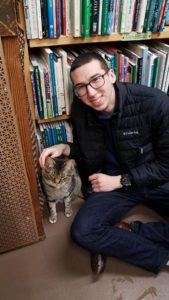
Alex’s parents, Dan and Dorothy Kearns, of Naperville, Illinois, and his sister, Sydney Kearns, who’s currently a freshman at Nebraska, have established the Alex Kearns UNL Memorial Fund with a $25,000 gift to the University of Nebraska Foundation. The fund will provide expendable financial support to the Big Red Resilience & Well Being program at UNL.
Dedicated to the well-being of all Husker students, the program offers a variety of resources aimed at helping students understand emotions, manage stress, build strength, connect with others, develop grit and navigate life transitions.
“We established this fund to honor Alex’s legacy of kindness, selflessness and his desire to help others,” Dorothy Kearns said. “We want it to increase mental health awareness and provide students like Alex with the tools and mechanisms to effectively deal with the well-being challenges they face, now and in the future.”
Dan Kearns said the fund will support REACH suicide prevention training and other initiatives that support mental health and well-being, suicide prevention, and overall student wellness and connectedness.
“Treating mental health shouldn’t be taboo, yet the stigma surrounding it prevents those suffering from seeking treatment,” Dan Kearns said. “Learning the warning signs and risk factors is vital to saving lives. Suicide is preventable.”
On April 18, the Kearns family gathered on campus to present their gift to the entire support staff at Big Red Resilience & Well-Being and were joined by UNL Chancellor Ronnie Green.
“We have the Kearns family and other families in our thoughts every day as we help and serve fellow Huskers,” said Connie Boehm, director of Big Red Resilience & Well Being. “Students who need support for their mental health motivate us and remind us of the importance of our outreach, and we’re incredibly grateful for the support from the Kearns family.”
Contact Big Red Resilience and get involved at resilience.unl.edu.
If you or someone you know is thinking about suicide, call the National Suicide Prevention Lifeline at 1-800-273-8255 for confidential support anytime.
Counseling services are available at no cost to UNL students through Counseling and Psychological Services at the Student Health Center. Information and help is at caps.unl.edu.
This post originally appears on IANR News.
Want to support the Engler Agribusiness Entrepreneurship Program directly? Then follow this link to make a gift today!
The Engler Agribusiness Entrepreneurship Program at the University of Nebraska–Lincoln has announced the recipients of scholarships for the 2022-23 academic year. The one-time scholarships will be awarded to 90 students totaling $194,000 for the ensuing academic year.
The Engler Agribusiness Entrepreneurship Program was established in 2010 by a gift from the Paul and Virginia Engler Foundation. The mission of the program is to embolden people on the courageous pursuit of their purpose through the art and practice of entrepreneurship. The program offers an academic minor while serving as an intersection in which students from a diverse array of majors and business interests can come together in pursuit of the American Dream.
Incoming Freshman Scholarship Winners:
Ainsworth: Tom Ortner, Libby Wilkins
Albion: Braden Benes, Carson Maricle, Cody Maricle
Arapahoe: Grant Taylor
Avoca: Jenna Knake
Colon: Teresa Quinn
Eddyville: Adilyn McFarland
Fremont: Adelaide Witte
Friend: Christian Weber
Kearney: Logan Greeno
Lincoln: Evan Boesen, Allison Walbrecht
Nelson: Kylie Beard
Oakland: Anna Karnopp
St Paul: Madison Hirschman
Sumner: Mattison Beattie
Wray, CO: Jaden Dodsworth
Continuing Student Scholarship Winners:
Ainsworth: Sam Wilkins, senior
Albion: Samantha Weeder, sophomore
Alliance: Madison Adam, junior
Ashland: Cinch Beetison, sophomore
Aurora: Blaine Bonifas, junior; Ellie Wanek, sophomore
Axtell: Jacob Wendell, junior
Ayr: Hunter Collins, sophomore
Bassett: Jillian Buell, sophomore; Jaya Nelson, sophomore
Berthoud, CO: Kace Thoren, sophomore
Bridgman, MI: Emma Schmidt, junior
Burwell: Emma Hoffschneider, senior
Clay Center: Sam VonSpreckelsen, sophomore
Columbus: Este Lesiak, sophomore; Carsten Loseke, junior
David City: Valerie Bohuslavsky, senior
Emmet: Chandra Spangler, senior
Firth: Daniel Oldemeyer, junior
Fordyce: Chase Lammers, junior
Fremont: Caitlyn Vyhlidal, senior
Franklin: Kristen Herrick, sophomore
Ft Lupton, CO: Dominic Gittlein, sophomore
Fullerton: James Wetovick, junior
Gilbert, AZ: Rachel Clarkson, junior
Gooding, ID: Charlotte Brockman, sophomore
Gothenburg: Heath Keiser, junior; Presley Wendelin, senior
Gresham: Chaylee Tonniges, junior
Gretna: Alexis Jansen, sophomore
Harvard: Dusty Stone, senior
Herman: Luke Mathiesen, junior
Hickman: Carter Rohrer, junior
Hooper: Taylor Ruwe, junior; Rebecca Wulf, junior
Lemoyne: Sheridan Wilson, sophomore
Lincoln: Marco Cuaran, senior
Lindsay: Preston Sueper, junior
Long Pine: Jacy Hafer, senior; Logan Hafer, sophomore
Malta, IL: Sawyer Willrett, junior
Mead: Abby Miller, junior
Minden: Kaleb Senff, sophomore
Morse Bluff: Hannah Williams, sophomore
North Platte: Celie Childears, junior; Katrina Webster, senior
Ogallala: Miah Hoppens, sophomore
Ord: Vickie Ference, sophomore; Amber Staab, junior
Osmond: Landon Stelling, junior
Otoe: Dalton Leefers, sophomore
Petersburg: Seth Wright, sophomore
Pierce: Dalton Freeman, junior
Ravenna: Kacey Dethlefs, sophomore
Saint Edward: Zane Niemann, sophomore
Sammamish, WA: Grave Weaver, senior
Seward: Emma Kuss, sophomore; Garrett Kuss, senior
Shenandoah, IA: Ty Lantz, sophomore
Stockton, KS: Caleigh Iwanski, junior
Sunbury, OH: Caleb Durheim, junior
Syracuse: Madison Kreifels, sophomore
Valentine: Dillion Muirhead, junior
Virginia: Logan Anderson, senior
Waco: Kailey Ziegler, sophomore
Wayne: Josie Thompson, senior
Wymore: Ashtyn Humphreys, junior
York: Keeley Conrad, sophomore; Cooper Koch, sophomore; Sam Otte, sophomore
Yutan: Miranda Mueller, senior
For more information, contact program director Tom Field at 402-472-5643 or tfield2@unl.edu.
This story originally appeared on the UNL website.
“The department’s faculty and staff share a passion for positively impacting the lives of others, and they are a model of excellence and collaboration in preparing students to become engaged citizens and leaders.”
University of Nebraska System President Ted Carter announced today that the Department of Child, Youth and Family Studies at the University of Nebraska-Lincoln is the recipient of the 2022 University-wide Departmental Teaching Award.
The UDTA, one of the President’s Excellence Awards, is the NU system’s most prestigious honor for departmental excellence in teaching. Since 1993, the UDTA has recognized departments or units within the university system that have made unique and significant contributions to NU’s teaching efforts and demonstrated outstanding commitment to the education of students at the undergraduate, graduate or professional levels.
Honored departments, selected by a committee of faculty members from across the university system, receive $25,000. The Department of Child, Youth and Family Studies will be celebrated at an event hosted by Carter this spring.
“Our fundamental responsibility at the University of Nebraska is to provide outstanding education to our students. The UNL Department of Child, Youth and Family Studies brings that commitment to life every day,” Carter said. “The department’s faculty and staff share a passion for positively impacting the lives of others, and they are a model of excellence and collaboration in preparing students to become engaged citizens and leaders.
“Our university, our communities and our state are stronger thanks to the extraordinary work of the Department of Child, Youth and Family Studies.”
Chaired by Michael Merten, G.A. Newkirk Professor of Leadership, the Department of Child, Youth and Family Studies works to enhance the well-being of children, youth, adults and families in the state, nation and world and improve the environments in which people live and learn. The department is home to 430 undergraduate majors, almost 100 graduate majors and 33 faculty members. Through faculty outreach and Nebraska Extension, the department’s programs reach all 93 Nebraska counties.
Its achievements include:
Want to learn how to support CYAF and the rest of the College of Education and Human Sciences? Then follow this link to make an impact.
This article was originally written by Kerry McCullough-Vondrak | Architecture
Busting at the seams with record enrollment and design studios over capacity for years, the College of Architecture has finally begun its long-awaited building renovation and expansion project.
Phase one of this project will add 12 new design studios, a wellness room, spray booth and work areas, critique spaces, new Americans with Disabilities Act compliant restrooms and a new 2,490 square-foot library with student common and collaboration areas — all by spring of 2023. Renovations will be done in both Architecture Hall East and Architecture Hall West.
Phase two, yet to be approved by the Board of Regents, will involve an expansion project that will add 14 new studios and a renovation of eight studios in the Architecture Hall West building among other changes.
Phase one includes moving the Architecture Hall Library from the north wing of Architecture Hall East and relocating it to the first floor of Architecture Hall West, providing ground floor access for the newly remodeled library. All three floors of Architecture Hall East’s north wing, where the library once stood, will now be renovated into needed studio space.
“We are excited about the start of this highly anticipated remodel project,” said Sharon Kuska, interim dean of the College of Architecture. “With a 17% enrollment growth over the last 10 years, it has pushed us over building capacity. This project is essential for accommodating our enrollment goals, creating a contemporary learning environment to attract potential students and providing our students with the best learning environment possible.”
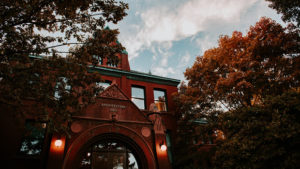
The university’s historic exterior of Architecture Hall will remain the same, however the interior will have a complete transformation.
In order to meet capacity needs, the college has had to use space in Brace Hall, Johnny Carson Center for Emerging Media Arts, Old City Hall and locations in the Haymarket. The college also had to transform non-traditional learning spaces into design studios to meet enrollment needs.
The project is being led by Alley Poyner Macchietto Architecture, the Whiting-Turner Contracting Company and Nebraska University Facilities, Planning and Capital Programs.
If approved, the second phase of the project will begin in the fall with the demolition of the “stacks,” a 1957 addition, and replaced with the addition of 14 new studios. Other phase two changes include the remodel of student studios, additional student collaboration areas, classrooms, a materials library, a virtual reality lab, a spray booth, maker spaces, more faculty offices and the relocation of the Geographic Information System (GIS) Lab to the first floor. If the phase two proposal is accepted, the project will be completed a year later in the fall of 2023.
The last time the College of Architecture underwent a major remodel or construction project was in 1987 with the creation of the glass atrium Link building which connected two existing buildings: Architecture Hall East and Architecture Hall West (which served as the university’s original College of Law).
The college complex houses two of the oldest buildings at the University of Nebraska-Lincoln. Architecture Hall East was put into service in 1895 as the old university library with 10,000 volumes and is the oldest building in the university system. This building was also placed on the National Register of Historic Places in 1975. Special accommodations are being made to ensure the building’s historical integrity. Architecture Hall West was built in 1912. It is the fifth oldest building on City Campus.
Want to support the College of Architecture during this renovation? Then follow this link to learn more about how to give.

A lot of good can happen in 24 hours.
In a true reflection of Husker spirit, the University of Nebraska–Lincoln’s Glow Big Red campaign (which ran from noon Feb. 16 to noon Feb. 17) collected 4,935 gifts totaling $598,575. Both totals are records as Husker faithful representing every U.S. state and six nations gave to Dear Old Nebraska U.
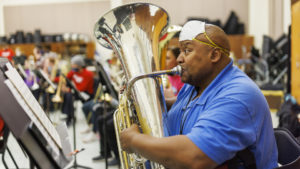
The fourth annual crowdfunding event focused on a wide range of opportunities to “Glow All In” in support of students through scholarships and programs. There were ways to support students in each college as well as to support the university’s many organizations and affiliates.
Student Kabin Thomas said a college scholarship and graduate fellowship he received from the Hixson-Lied College of Fine and Performing Arts enabled him to continue his music performance studies. The student aid is made possible by Glow Big Red and other support throughout the year.
“It means everything to me — the fact that I can go back to school and not panic about bills,” Thomas said. “Without the scholarships, I wouldn’t be here right now.”
More than 100 campus-based student organizations and groups participated, the most ever during Glow Big Red.
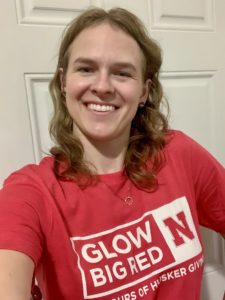
Nebraska alumna Courtney Van Hoosen Makhmudzoda, who received a bachelor’s degree from the College of Business and a master’s degree from the College of Journalism and Mass Communications, made contributions to campus organizations that she cares about and that impacted her during her studies.
“I’m proud to Glow Big Red for areas at UNL that made a difference in my life and are carrying out missions I believe in,” said Van Hoosen Makhmudzoda, who serves as assistant director for the Office of Global Partnerships and Initiatives at UNL.
Gifts during the event were made at glowbigred.unl.edu where full results are available.
The event has garnered momentum and more philanthropic help for the university each year. Last year nearly 4,000 gifts were received with $436,000 in total support.
Largely driven by social media, supporters used #GlowBigRed to share their personal stories and why the university matters to them.
Glow Big Red started in 2019 in recognition of the university’s 150th anniversary and continues as an annual campus tradition.
The University of Nebraska–Lincoln invites its supporters to Glow All In during Glow Big Red — 24 Hours of Husker Giving on Feb. 16–17, 2022.
Glow Big Red is UNL’s annual giving event during which students, alumni, faculty, staff and the Husker community at large come together to raise needed support for scholarships, colleges and programs, student groups and activities, inclusion, wellness and other important causes.
The day starts at noon on Wednesday, Feb. 16 and lasts until noon on Thursday, Feb. 17. This year’s goal is 4,500 gifts to make a meaningful impact in the lives of thousands of Husker students.
Information about Glow Big Red, including a kickoff video, options for giving and tracking the event’s progress can be found at glowbigred.unl.edu.
Give, Glow and Share to get involved
Here are the top three ways everyone can get involved:
—GIVE: Find your favorite area to support and give. Those who contribute $60 or more will receive a Husker fleece blanket as a thank-you. (Blankets will be sent three to five weeks after the event.)
—GLOW: Make your room, home or business glow to let your Husker pride shine!
—SHARE: Use the hashtag #GlowBigRed to show your support on social media and follow this link to share your Glow Big Red story.
You can get a jumpstart on this involvement, including making your gift as early as Jan. 17, a month before Glow Big Red.
Last year was a Glowing success
Now an honored Husker tradition, this is the fourth year for Glow Big Red. Last year’s Glow Big Red encouraged the Husker community to come together and contribute more than $436,000 from close to 4,000 gifts. Gifts came from every U.S. state and nine other countries.
Glow Big Red started in 2019 in recognition of the university’s 150th anniversary.
Glow All In on social media
Join Husker Nation Feb. 16–17 at glowbigred.unl.edu. Help share the excitement online by using #GlowBigRed to share why you Glow All In and care. And follow along at these channels:
Hannah, originally from South Dakota, started out her college career like most college students by starting in one college then finishing in another. But her first exposure with NHRI was on her New Student Enrollment day, when her mother was with a guide who was in NHRI and told her all about it. She did receive a lot of encouragement from people within her circle on campus to officially pursue it (shocker … she did). From there she was with the program for three years, while her studies transitioned to the psychology discipline with minors in education and English. It seems she was primed for a career with NHRI with credentials like that. That experience she had with the program and the impact she saw it could have on students were driving factors for why she wanted to continue with NHRI in a leadership role while also continuing her education to fine-tune the skills she had as an amazing mentor. With her position as the program director, she works hands-on with the mentors to provide training and guidance for how they can be effective mentors to the students they work with.
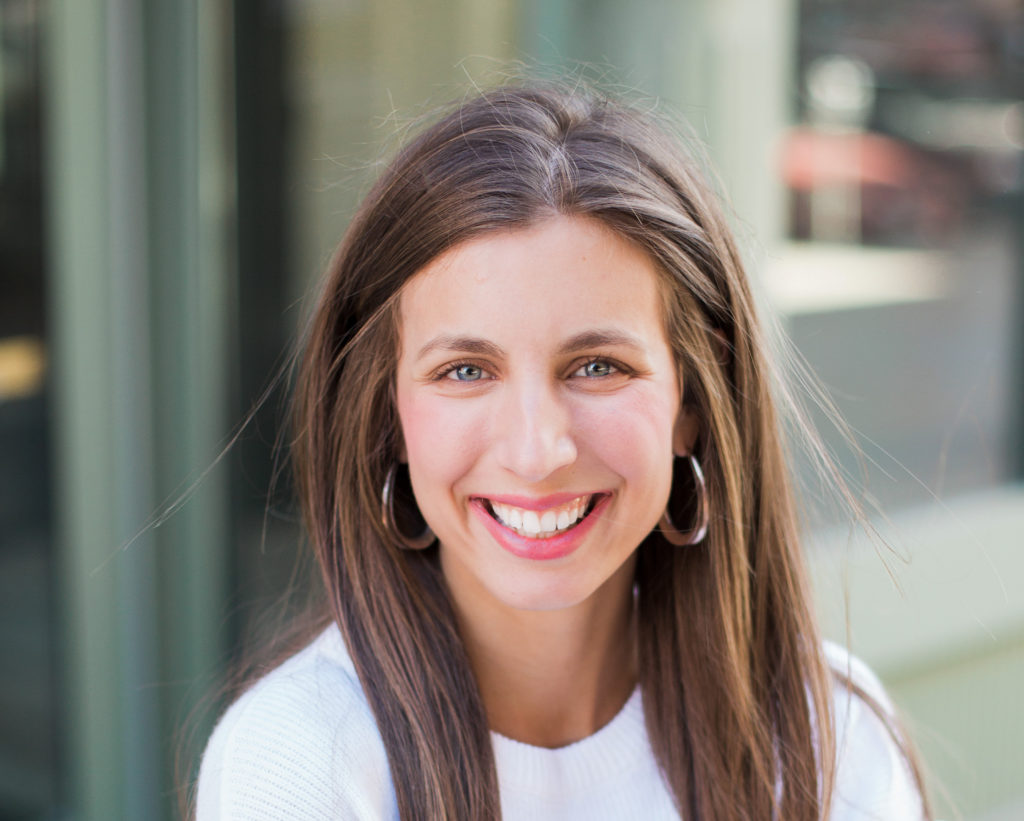
NHRI, which stands for the Nebraska Human Resources Institute, was first established in 1988 (and became NHRI Leadership Mentoring in 2019). It was predated, though, by the Nebraska Human Resources Research Foundation that was founded by Dr. William Hall and Dr. Donald Clifton. Yes, that Clifton of Clifton Strengths. Pretty cool that a mentorship program has the history of being started by the guy who pioneered psychology within the world of professionalism and business. But what exactly is NHRI and what do they do? NHRI is a leadership development program in which outstanding college leaders are paired with outstanding young leaders in the Lincoln Public Schools system. The objective is to discover individuals with exceptional capacity to positively influence others and develop their leadership capacity through one-to-one investment relationships. Sounds pretty cool, right? Well, after talking with the NRHI program director, Hannah Sunderman, and NHRI staff adviser for Lincoln High, Victor Mpore, it was clear that there was something very special happening within this program.

On the other side of the table is Victor Mpore. Victor, who currently is a staff adviser for NHRI at Lincoln High, works directly on the relationships between the mentors and the mentees. Victor, like Hannah, had a path toward being with NHRI postgraduation due to the impact he saw he could have on students’ lives and through gaining multiple leadership positions through his collegiate career with NHRI. And also like Hannah, he found encouragement from people around him and noticed that his personal attributes lined up perfectly with what NHRI looks for in mentors. What he has seen, especially this year due to the pandemic, is the growth that mentees go through when they are faced with difficult situations and conversations that are encompassing the national spotlight and ones that directly affect them on a daily basis, considering how diverse the student population is at Lincoln High. Also, the relationships that he has seen the mentors develop with their mentees during this period of time has been amazing to watch, because it can be hard for the mentees to open up and be vulnerable with people who aren’t within their tight circle. But with some proper coaching from NHRI, the dialog between mentors and mentees has been extremely healthy for coming to common ground on differences of opinion. That is something that can’t be said everywhere else.

What can certainly be discerned from these two perspectives of NHRI is that the organization has a lasting impact on the people who become involved with it, whether that be as a mentee or a mentor. The relationships and the values that are instilled in the participants are something that can’t be taught in a classroom (even though mentors do take classes to prepare them for their interactions with mentees). That is why NHRI came to Nebraska Grow, to set up a crowdfunding campaign that would help support and fund the staff advisers and the yearly stipend they receive through the generous donations from the people that choose to support NHRI.
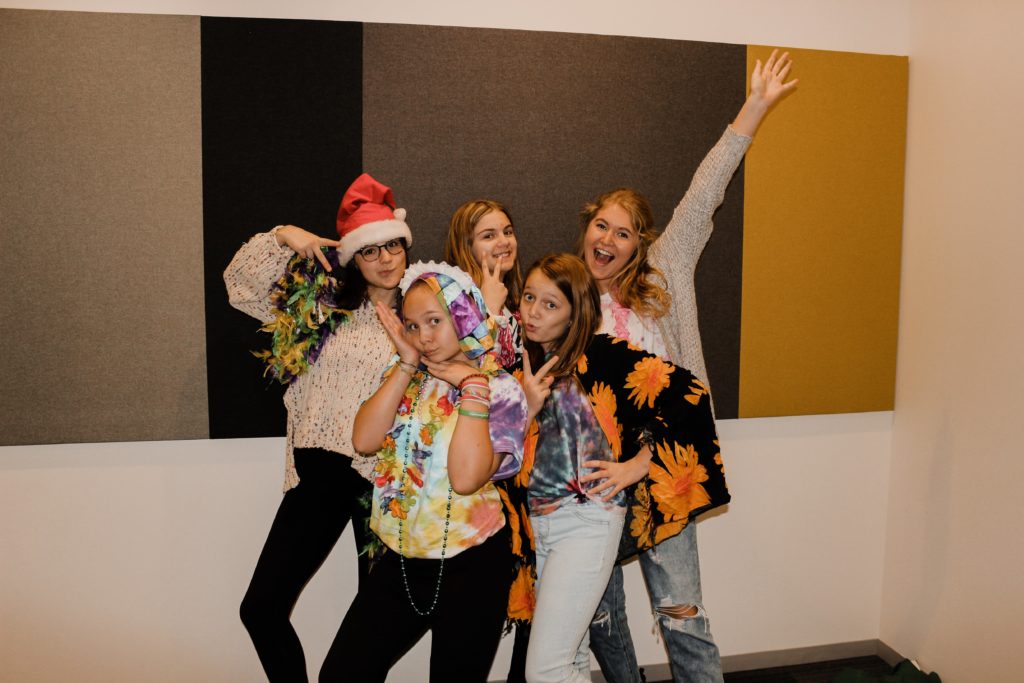
But what is Nebraska Grow? Well, you’ve more than likely heard of the University of Nebraska Foundation, but you might not have heard of our crowdfunding initiative that is Nebraska Grow. Basically, Nebraska Grow provides opportunities and tools to passionate supporters of the University of Nebraska, whether that be for UNL, UNK, UNO or UNMC. Are you a champion for a new scholarship fund? Are you looking to drum up support for a student group? Then Nebraska Grow and our crowdfunding platform might be a great option for you as it was certainly a great option for NHRI and their goals.
Want to learn more about Nebraska Grow and how you can get your organization involved? Then follow the link here!